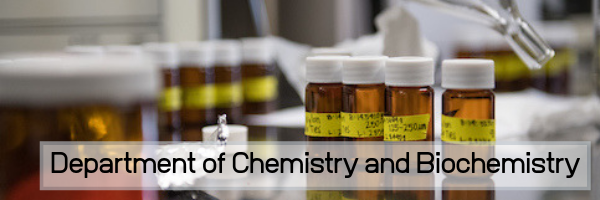
Faculty and Student Publications
Document Type
Article
Publication Date
1-4-2022
Abstract
Geminal diols—organic molecules carrying two hydroxyl groups at the same carbon atom—have been recognized as key reactive intermediates by the physical (organic) chemistry and atmospheric science communities as fundamental transients in the aerosol cycle and in the atmospheric ozonolysis reaction sequence. Anticipating short lifetimes and their tendency to fragment to water plus the aldehyde or ketone, free geminal diols represent one of the most elusive classes of organic reactive intermediates. Here, we afford an exceptional glance into the preparation of the previously elusive methanediol [CH2(OH)2] transient—the simplest geminal diol—via energetic processing of low-temperature methanol–oxygen ices. Methanediol was identified in the gas phase upon sublimation via isomer-selective photoionization reflectron time-of-flight mass spectrometry combined with isotopic substitution studies. Electronic structure calculations reveal that methanediol is formed via excited state dynamics through insertion of electronically excited atomic oxygen into a carbon–hydrogen bond of the methyl group of methanol followed by stabilization in the icy matrix. The first preparation and detection of methanediol demonstrates its gas-phase stability as supported by a significant barrier hindering unimolecular decomposition to formaldehyde and water. These findings advance our perception of the fundamental chemistry and chemical bonding of geminal diols and signify their role as an efficient sink of aldehydes and ketones in atmospheric environments eventually coupling the atmospheric chemistry of geminal diols and Criegee intermediates
Relational Format
journal article
Recommended Citation
Zhu, C., Kleimeier, N. F., Turner, A. M., Singh, S. K., Fortenberry, R. C., & Kaiser, R. I. (2022). Synthesis of methanediol [CH 2 (Oh) 2 ]: The simplest geminal diol. Proceedings of the National Academy of Sciences, 119(1), e2111938119. https://doi.org/10.1073/pnas.2111938119
DOI
10.1073/pnas.2111938119
Accessibility Status
Searchable text

